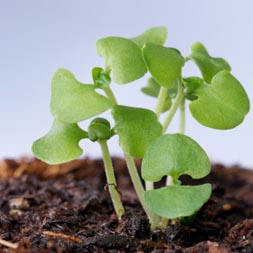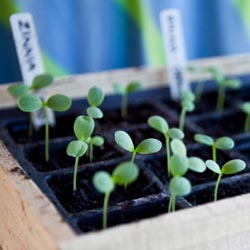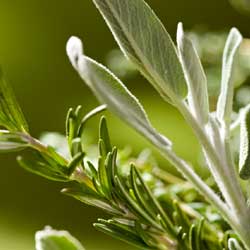Spring Flowering Fantasy
The arrival of spring is evident more in the blossoms of trees than anything else. The joyful coloring of the landscape by spring-flowering trees truly lifts the spirits – the pinks and whites of dogwoods and crabapples, the glorious blossoms of magnolia and ornamental pears that magically appear almost overnight. Together, they proclaim that winter is finally over.
Some of our favorite early flowering trees include:
Magnolia – The first to bloom is the Star Magnolia with its many petaled, white flowers. A week later several varieties of Saucer Magnolias make their debut with big, rich, full, cup-shaped flowers in shades of white, pink and purple.
Ornamental Pear – Smothered with small white flowers, Ornamental Pears also have rich leaf color in late fall. Use as a specimen or accent as well as a street tree.
Ornamental Cherry – Every landscape should have at least one cherry tree. The breath-taking Weeping Cherry announces spring’s arrival, followed by the famous Yoshino Cherry of Washington D.C. Next, the popular vase-shaped Kwansan Cherry explodes into bloom with deep pink, double flowers.
Redbud – An adaptable tree with charming bright purple flowers along its bare branches. ‘Forest Pansy’ also boasts purplish foliage all summer. This is one of the few trees that will tolerate shade.
Dogwood – Our native Dogwood is one of the most beautiful flowering trees. Graceful flowers in white, pink and red appear to float on its bare branches. In fall, leaves turn to a reddish purple color with clusters of red berries.
Seed Starting
Starting seeds indoors is a rewarding gardening experience and can help extend your growing season to include more plant varieties than your outdoor season may permit. Furthermore, a larger selection of seed varieties doesn’t limit your opportunities to growing only those transplants that are available at planting time. The key to success in growing seedlings is in creating the proper environment.
What Seeds Need
Seeds are generally hardy, but to start them properly they do need gentle nurturing so they can produce healthy, vibrant plants. In general, seeds should be started 4-6 weeks before the recommended planting time so the seedlings will be large and strong enough to withstand the stresses of transplanting. Use a sterile growing mix which is light enough to encourage rich root growth. Sow the seeds thinly and cover lightly with sphagnum peat moss. Water using a fine spray but do not soak the seeds – they also need oxygen to germinate, and if they are overwatered they will drown. Cover the container with clear plastic to hold the moisture and increase humidity. Place the containers in a warm (70-80 degrees) spot and watch daily for germination. The top of the refrigerator is often an ideal location. When the first seeds germinate, place the seedlings in bright light or under artificial lights (tube lights should be 2-3” from seedling tops) for several hours each day, since late winter sunlight will not usually be sufficient to prevent weak, leggy seedlings. Daytime temperatures should range from 70-75 degrees. Night time temperatures should range from 60-65 degrees.
As Seeds Grow
When the seedlings develop their first true sets of leaves, add half-strength water soluble fertilizer to their water – organic fish emulsion or seaweed fertilizers are great to use. Repeat every second week to provide good nourishment. Thin the seedlings or transplant them to larger containers as they grow. Before planting outdoors, harden-off the plants at least one week before the planting date. Take the transplants outdoors in the daytime and bring them in at night if frost is likely. Gradually expose them to lower temperatures and more sunlight. The use of hotcaps and frost blankets to cover early plantings will also aid in the hardening off process so the seedlings can adjust well to their new outdoor environment.
Transplanting Seeds
Transplant seedlings into the garden after the safe planting date on a calm, overcast day. Pack the soil around the transplant with as little root disturbance as possible. Sprinkle the plants with water, keeping the soil moist until the plants become established.
Popular Indoor Seed Start Dates
The exact dates you want to start seeds will vary depending on your local growing season, the varieties of plants you choose and what their needs are. In general, dates for the most popular produce include…
Vegetable Seed Starting Dates
- February – Asparagus, celery, onion
- March 1 – Broccoli, Brussels sprouts, cabbage, cauliflower, collards, kale, lettuce
- March 15 – Eggplant, peppers, tomatoes
- April 1 – Summer squash
- April 15 – Cantaloupes, cucumbers, winter squash
Flower Seed Starting Dates
- January/February – Begonia, carnation, geranium, impatiens, nicotiana, pansy, rudbeckia, salvia, snapdragon, verbena, vinca
- March 1 – Ageratum, dahlia, dianthus, petunia
- April 15 – Aster, calendula, celosia, marigold, zinnia
Use seed starting dates as a general guide to ensure your seeds have plenty of time to reach their full harvest potential before the weather turns in autumn. At the same time, consider staggering seed starting every few days to lengthen your harvest and keep your favorite vegetables and flowers coming even longer during the growing season. As you gain more experience with starting seeds, you’ll be able to carefully plan your seed calendar to ensure a lush, rich, long harvest season.


Early Spring Gardening Calendar


 * Plan your summer vegetable and herb garden. We offer a wide selection of seeds that include all of your favorite annuals, perennials, vegetables and other novelties as well as many hard-to-find selections. Inventory your pots and flats and discard unusable ones. Make a list of the supplies you will need. Have your garden soil tested for nutrient content. We offer a variety of do-it-yourself soil test kits.
* Plan your summer vegetable and herb garden. We offer a wide selection of seeds that include all of your favorite annuals, perennials, vegetables and other novelties as well as many hard-to-find selections. Inventory your pots and flats and discard unusable ones. Make a list of the supplies you will need. Have your garden soil tested for nutrient content. We offer a variety of do-it-yourself soil test kits.
- Prune woody plants while dormant, including fruit trees, summer- and fall-blooming shrubs and vines. Limit pruning of spring-blooming trees and shrubs to the removal of sucker growth and rubbing or broken branches. Spray trees and shrubs with year-round horticultural oil to reduce insect population.
- Sharpen, clean and oil tools and lawn mowers. Begin heavy annual pruning of shrub roses as new leaves appear.
- Plant pansies, English daisies and primrose as soon as the earth is workable. Plant strawberry plants. Sow cool-season vegetables and herbs in the garden.
- Start spring cleanup and begin major lawn work. Remove debris, dethatch your lawn or aerate compacted areas to improve water penetration.
- Spray needles and limbs of Arborvitae, Cryptomeria, false cypress, fir, hemlock, Juniper, pine, yew and spruce (except blue spruce) for spider mites with year-round horticultural oil.
- Apply fertilizer to perennials and roses with. Feed berry bushes, grapevines, rhubarb and asparagus a balanced 10-10-10 fertilizer before new growth begins. Fertilize trees and shrubs.
- Apply crabgrass preventer with fertilizer to feed the lawn and control crabgrass. Do not use on newly seeded lawns.
- Continue spring cleanup. Cultivate to remove winter weeds and debris from the planting beds. Apply corn gluten or a pre-emergent herbicide with fertilizer specified for gardens and scratch it in to prevent future weeds. Do not use in gardens where you will be direct seeding.
- Reseed bare spots in established lawns. Keep the area moist until seedlings appear, then mow when the new grass is 3″ high.
- Prune forsythia and other spring-flowering trees & shrubs after the flowers fall.




